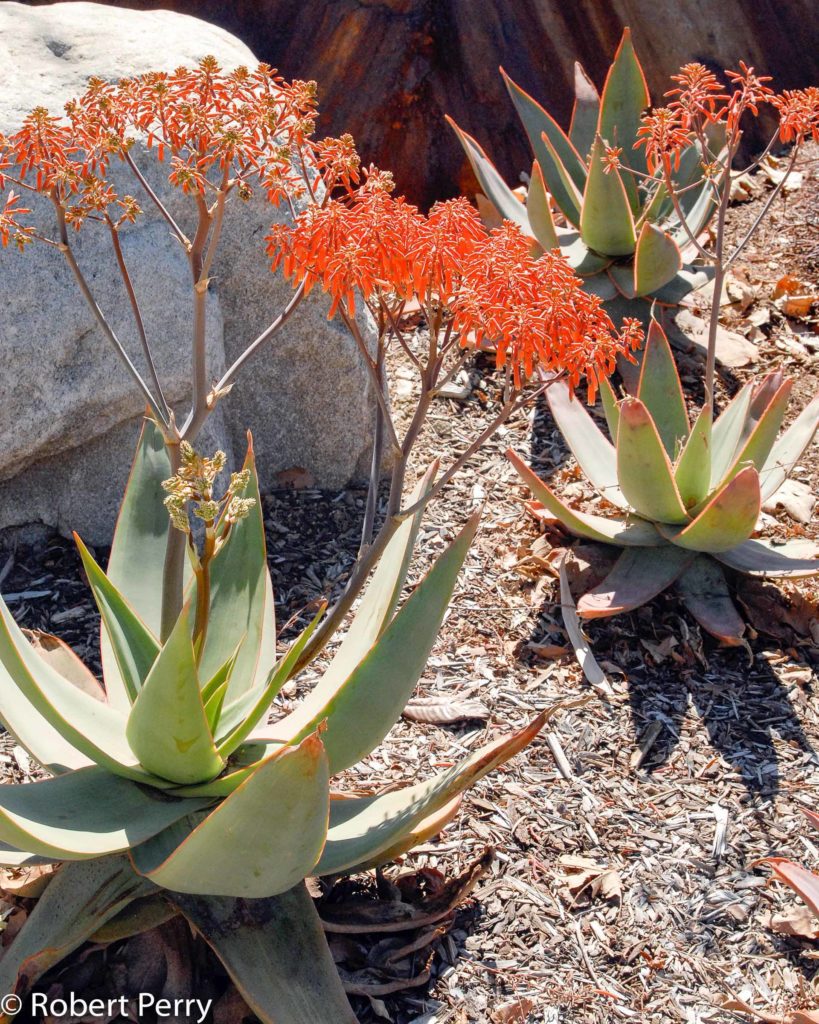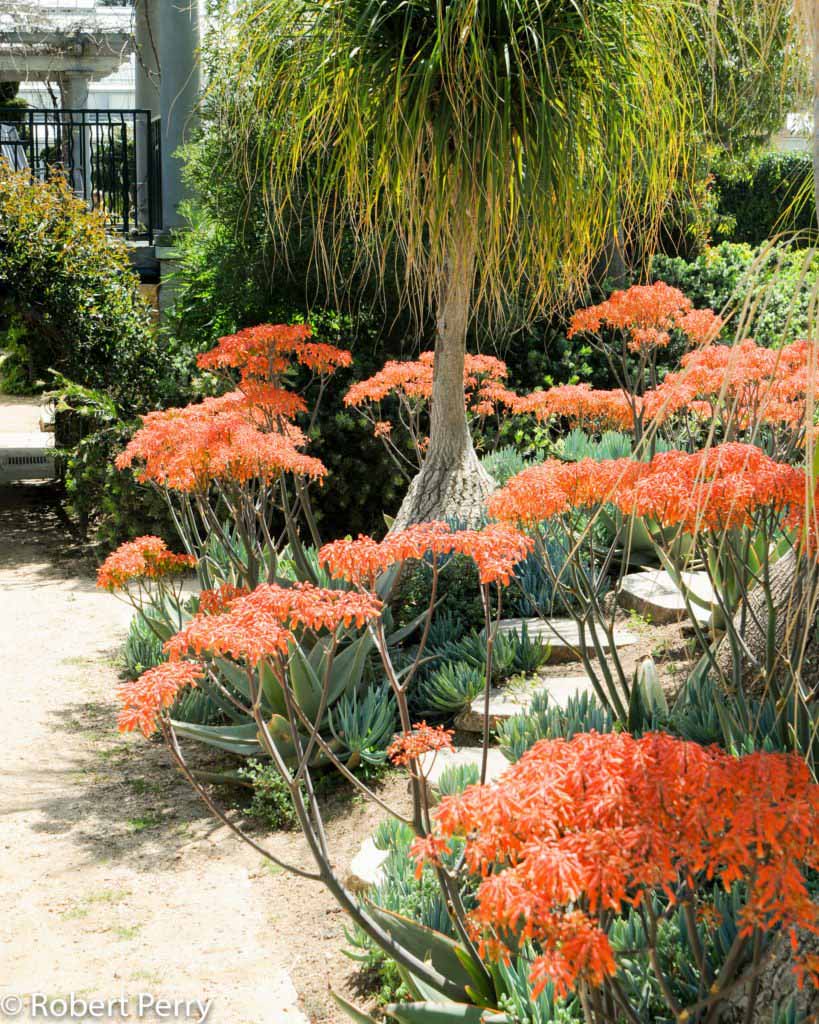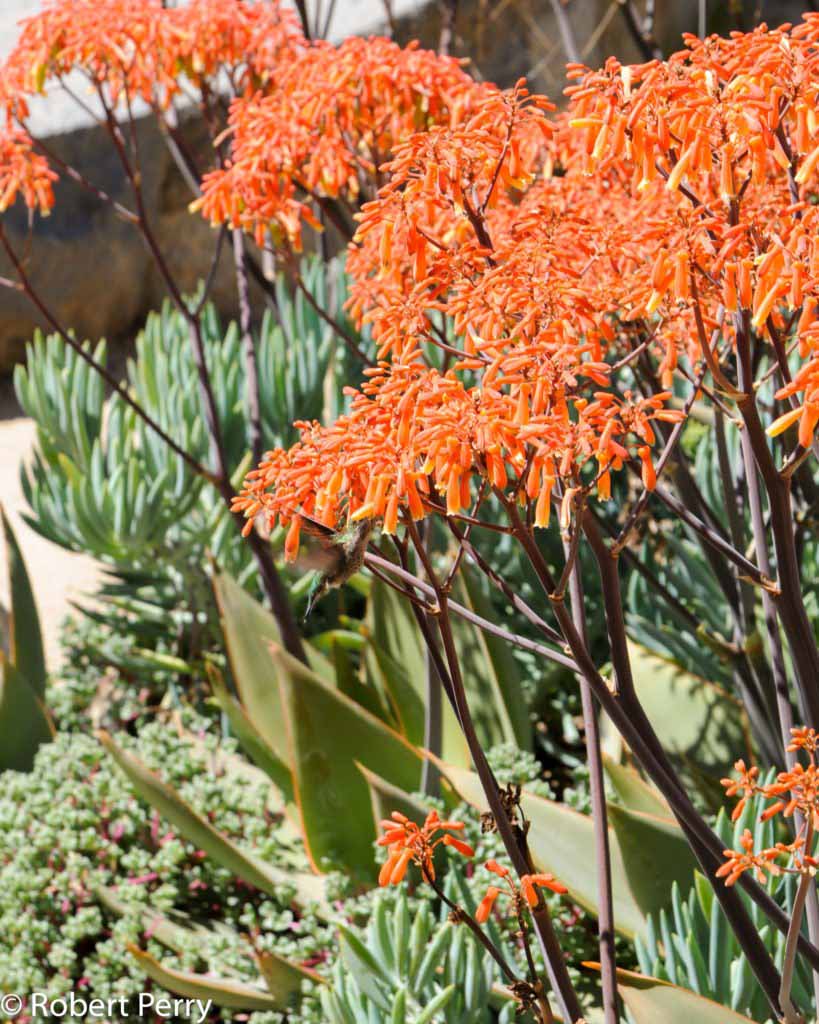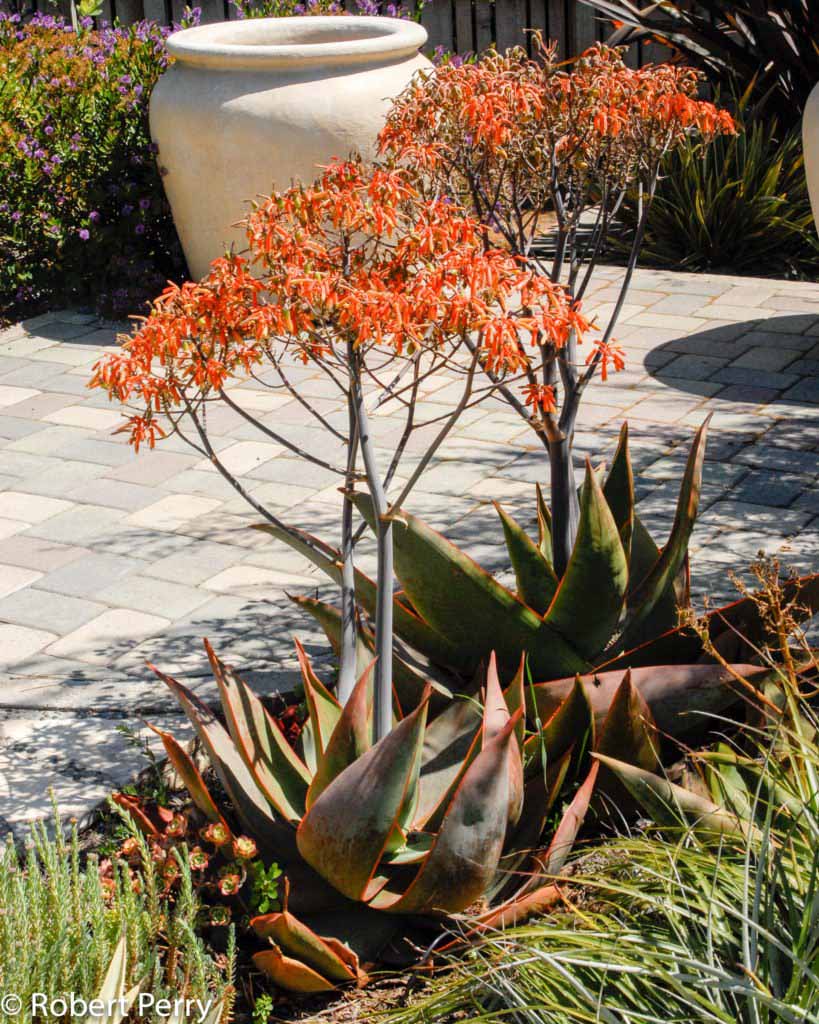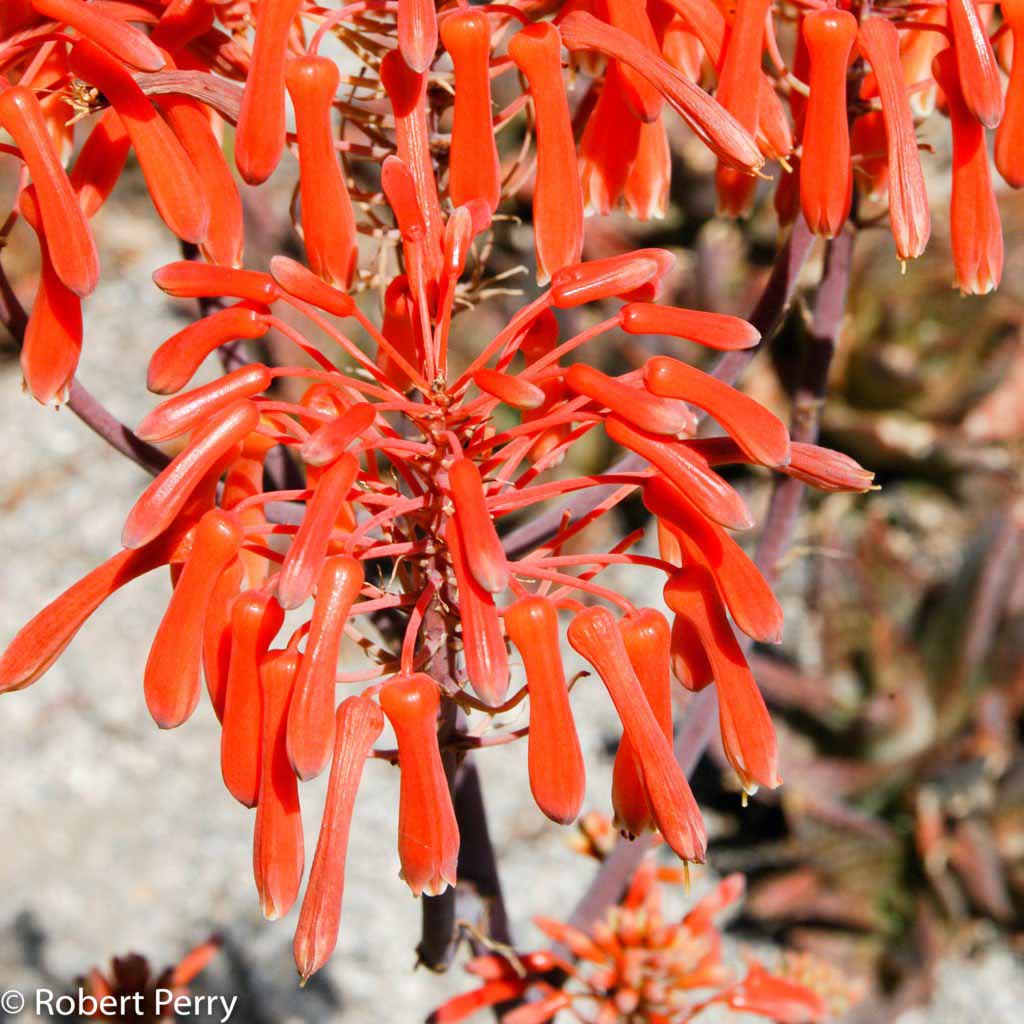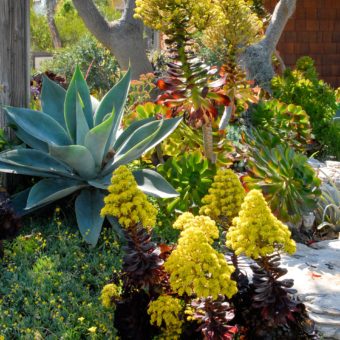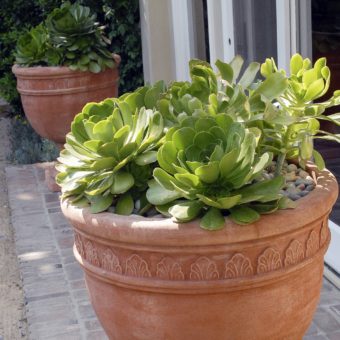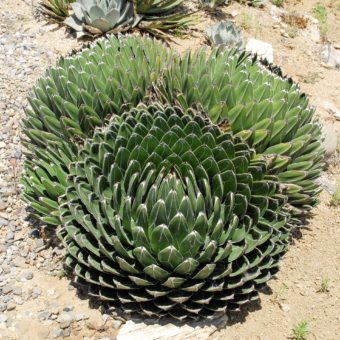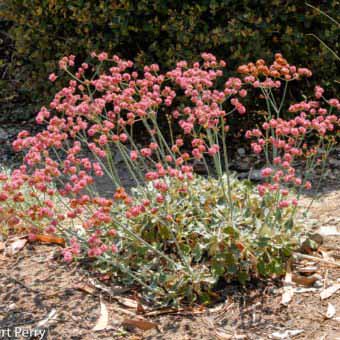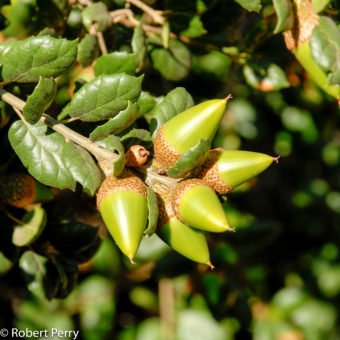Coral aloe is well adapted to all parts of the Inland Empire in sunny exposures with normal winter rains and low amounts of summer irrigation. The chart shown below provides a recommended baseline guide to the monthly irrigation schedule and volume of supplemental water needed to maintain healthy growth throughout the average year. It should be noted there are several months indicated by an asterisk (*) when winter rains often provide sufficient moisture and irrigation is not needed. The high and low range of moisture indicates Coral aloe can grow with varying amounts of water; little supplemental water is needed during summer.
| |
Jan* |
Feb* |
Mar* |
Apr |
May |
Jun |
Jul |
Aug |
Sep |
Oct |
Nov* |
Dec* |
| Runs per Month |
0x to 2x |
0x to 2x |
0x to 2x |
1x to 2x |
1x to 2x |
1x to 2x |
1x to 2x |
1x to 2x |
1x to 2x |
1x to 2x |
0x to 2x |
0x to 2x |
| Inches per Run |
1″ |
1″ |
1″ |
1″ |
1″ |
1″ |
1″ |
1″ |
1″ |
1″ |
1″ |
1″ |
| |
| Inches per Month |
0″ to 2″ |
0″ to 2″ |
0″ to 2″ |
1″ to 2″ |
1″ to 2″ |
1″ to 2″ |
1″ to 2″ |
1″ to 2″ |
1″ to 2″ |
1″ to 2″ |
0″ to 2″ |
0″ to 2″ |
Range of supplemental summer water: 7"-14"
Range of supplemental winter water: 0"-10"
| |
0″-2″ |
0″-2″ |
0″-2″ |
1″-2″ |
1″-2″ |
1″-2″ |
1″-2″ |
1″-2″ |
1″-2″ |
1″-2″ |
0″-2″ |
0″-2″ |
| |
Jan* |
Feb* |
Mar* |
Apr |
May |
Jun |
Jul |
Aug |
Sep |
Oct |
Nov* |
Dec* |
For more information on how to use this Irrigation Schedule and Graph, follow this link.
For information how to calculate your irrigation system’s schedule and precipitation rate, please follow this link.
Prune dead flower heads when needed, usually in early summer. If flower stalks have dried out, they can usually be removed by pulling rather than needing to use a hand pruner (D,S).
References